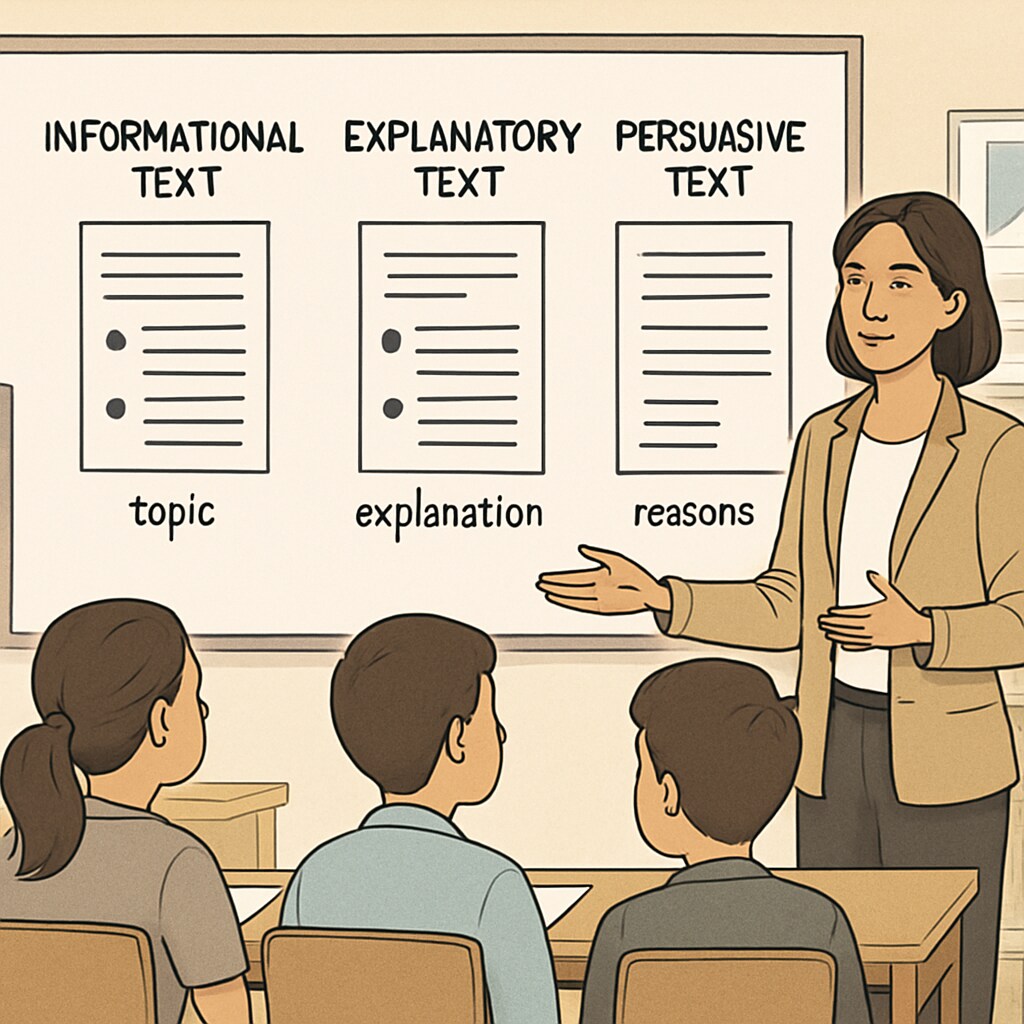For many K12 students, identifying the purpose of a text in functional English reading comprehension exams can be a daunting task. Questions like, “Is this text meant to inform, explain, or persuade?” often lead to confusion and second-guessing. Understanding the purpose of a text is a critical skill, as it not only improves exam performance but also enhances overall reading proficiency. This article will explore strategies to help students confidently determine the purpose of a text, focusing on informational, explanatory, and persuasive writing. By mastering these techniques, students can overcome their reading challenges and excel in functional English.

Understanding the Three Main Text Purposes
Before jumping into strategies, it’s essential to understand the three primary purposes of functional English texts: to inform, to explain, and to persuade. Each purpose has unique characteristics that can be identified with practice and attention to detail.
- Informational Texts: These texts aim to provide facts, data, or knowledge about a particular topic. Examples include news articles, user manuals, and informational brochures. These texts often use a neutral tone and focus on delivering clear, concise information.
- Explanatory Texts: The goal of these texts is to clarify or teach a concept. Explanatory passages often include step-by-step instructions or detailed descriptions. Examples include how-to guides, science articles, and process explanations.
- Persuasive Texts: Designed to convince the reader to adopt a viewpoint or take action, persuasive texts use emotional language, logical arguments, and rhetorical questions. Examples include advertisements, opinion pieces, and political speeches.
Recognizing these core purposes is the first step in decoding a text’s intent. However, students often encounter overlapping features, making the task trickier. Let’s explore practical strategies to tackle this challenge.
Strategies for Identifying Text Purpose
Identifying the purpose of a functional English text requires a combination of critical reading, attention to detail, and practice. Below are some actionable strategies designed to help students become more confident in their reading comprehension skills.
1. Analyze the Language and Tone
The choice of words and tone can provide strong clues about a text’s purpose. For example:
- Informational texts often use neutral and objective language, avoiding emotional appeals.
- Explanatory texts tend to use clear, structured language, often including transitional phrases like “firstly,” “next,” or “finally.”
- Persuasive texts frequently employ emotive words, rhetorical questions, and calls to action such as “Join now!” or “Don’t miss out!”
2. Pay Attention to the Structure
Different text purposes often follow distinct structures:
- Informational texts are typically organized into sections with headings and subheadings.
- Explanatory texts may include numbered steps, diagrams, or sequential flow.
- Persuasive texts often begin with an engaging hook, followed by arguments and a strong conclusion.
By understanding these patterns, students can narrow down the possible purpose of the text.
3. Look for Key Phrases
Authors often include phrases that hint at their intent. For example:
- Informational texts may use phrases like “According to research” or “Statistics show.”
- Explanatory texts may include phrases like “This means that” or “In other words.”
- Persuasive texts might use phrases like “We strongly believe” or “You should consider.”

Practice Makes Perfect
Mastering text purpose identification takes time and practice. Here are some tips to develop this skill:
- Read Widely: Expose yourself to different types of texts, including news articles, opinion pieces, and instructional guides. This will help you recognize patterns and features unique to each text type.
- Practice with Past Papers: Use previous exam questions to practice identifying text purposes under timed conditions.
- Discuss with Peers: Collaborate with classmates to discuss and analyze texts together, comparing observations and interpretations.
- Seek Feedback: Ask teachers or tutors to review your practice responses and provide constructive feedback.
By integrating these strategies into your study routine, you can develop a deeper understanding of functional English texts and their purposes.
Conclusion
Functional English reading tests often challenge students to determine the purpose of a text, but with the right strategies, this skill can be mastered. By analyzing language, tone, structure, and key phrases, students can confidently identify whether a text is meant to inform, explain, or persuade. Practice is essential, so make use of diverse reading materials and seek feedback to refine your skills. With persistence, any student can overcome the hurdles of functional English reading comprehension.
For additional resources on text types and their characteristics, explore reliable educational platforms such as Wikipedia’s Text Types or Britannica’s Reading Comprehension Guide.
Readability guidance: Use concise paragraphs, bullet points, and clear transitions to enhance understanding. Avoid complex sentences and focus on actionable advice to engage readers effectively.


